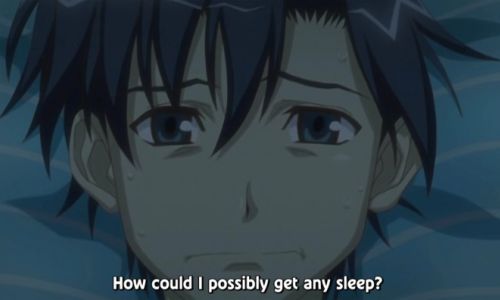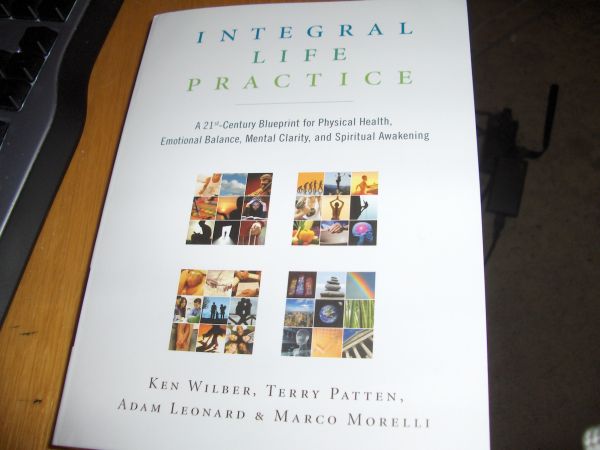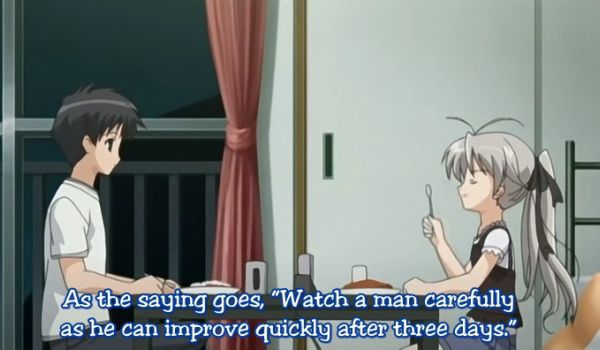
Kyaaa! Endlessly happy endorphins and hormones course through their minds and bodies, causing them to quiver with pleasure! Â And today it was my turn…
“Within 8 minutes you will quiver with pleasure ” says the website. Â It sounds like something you would confine to the bedroom, doesn’t it? Â Not that I know anything about those realistically vibrating rings or whatever my fellow singles collect. Â No. But it is amazing what the mind can do with a little technical assistance pulsing at the right frequency. Or so we have learned from the website. In fact, the bedroom is one recommended location. Â I tried that last night before going to sleep, but no quivering ensued. Perhaps because my ultra wide frequency headphones are really big, heavy and lumpy to wear in bed.
LifeFlow did make me quiver with pleasure at work today, though. Although I am not sure how much came from the isochronic tones and how much came from reading the outrageous deadpan parody of Bill Harris at their forum.
You can say what you will about Bill Harris, and a lot of people do just that, since he is rich and famous and they are not. Â But one thing he does right is to pile on with information. Â Actually the scientific content is pretty low – it is popular science at its most popular – but there is some science, some common sense and a lot of anecdotal evidence. Â The sum total of this makes for a fairly specific impressions. Â Well, Â LifeFlow subtly copies the same recipe. They use their own words, no cut and paste, but they retain and use the same key concepts and in roughly the same order. If you have read Centerpointe stuff, it is very obvious. Â Hilariously so, at times, although I am not sure if that was intended. Â That makes it even funnier.
(The two competitors use the same basic technology, but only at the very core. Â Both of them use binaural beats, which I have written about for a month now. Â LifeFlow also uses monaural beats (where interference between two tones takes place in the air rather than the head) and isochronic tones (where a carrier tone is cut on and off, and the frequency at which it goes on and off is the target frequency). Â Actually, the human ear cannot hear frequencies lower than 20 Hz at best, which is higher than those used to assist meditation. Â Your body can FEEL the beat however if it is loud enough, but there is doubt about whether this causes brainwaves to follow the frequency. Isochronic tones however should work, in much the same way that pulses of light do. Â They can also be used without headphones, but you still need the headphones for the binaural part.)
Where Centerpointe advertises “The lazy man’s way to meditate”, LifeFlow sells “the laziest, most enjoyable way to meditate ever”.  Centerpointe: “Did you know that people who meditate everyday are many times happier than those who don’t? They’re also healthier, and live longer.”  LifeFlow: “Did you know that people who meditate daily are much happier, healthier and live longer than those who don’t?” And so on, and on, for pages.  Everything Bill says, down to the dubious theory about reorganizing the brain on a higher level and the sage advice to not resist the change, Michael says too, in slightly different words.
So at work today I fired up the free demo MP3 which I had downloaded from their site.  While MP3 is a “lossy” compression, the LifeFlow Project Meditation still thinks it should have enough effect to impress the listener.  The sound was pretty soft, so I  turned it up quite a bit.  The result was an amazing feeling of suddenly being in a sunlit forest glade.  Birds were twittering, a small brook was gurgling happily in the background, and there were other vague sounds  like wind.  At this sound level, I could feel the  slight vibration in my body from the deep sounds that we can’t hear.  You may know this as “infrasound”.  In any case, it was as close  to being outdoors as you can be while in an office.
I enjoyed my improved work environment. Â When the 14 minute demo stopped, I Â just played it over. And over. At the fourth playing through (I think), I took a break from work and looked at their website, where I found the stuff above, where they were aping the Holosync Solution, down to the money back guarantedd (although there is only half as much money involved here) and the offer of personal follow-up and even a set of CDs on how to meditate. Each of these things and many others were lifted straight from Centerpointe’s Holosync pages, but casually written in other words. Â At that point, I started to quiver with pleasure – or at least mirth – as endlessly happy endorphins and hormones coursed through my mind and body. As we say here in Norway, “a good laughter prolongs life”.
I had to turn off the sound and take a walk, but it took more than half an hour before the endlessly happy endorphins drained  enough that I could concentrate on work for more than a few seconds at a time.  I’ll definitely be more careful in the future, if any.  But whether the isochronic sounds could cause that kind of high without the hilarious and possibly unintentional parody, I don’t know.  If I find out, I will try to report again.
Unfortunately, the frequency used here (alpha) does not substitute for sleep, so I really really could need a bed now.








 Proof that I have at least unpacked it!
Proof that I have at least unpacked it! I am sure a sore throat can improve after three days, and perhaps some simple skills, but what about personality? How many days, years or decades does that take? Â Is it even possible?
I am sure a sore throat can improve after three days, and perhaps some simple skills, but what about personality? How many days, years or decades does that take? Â Is it even possible?